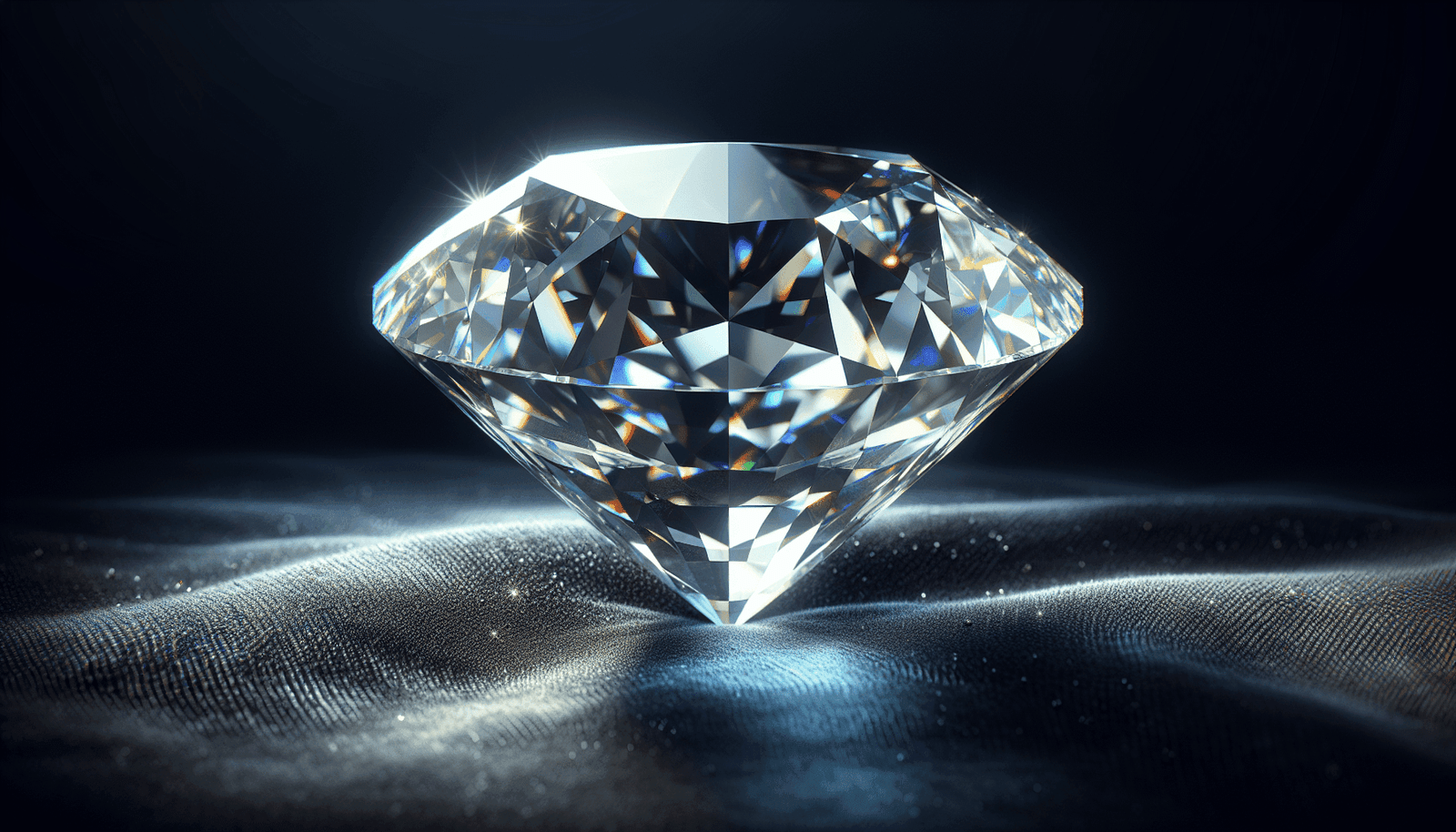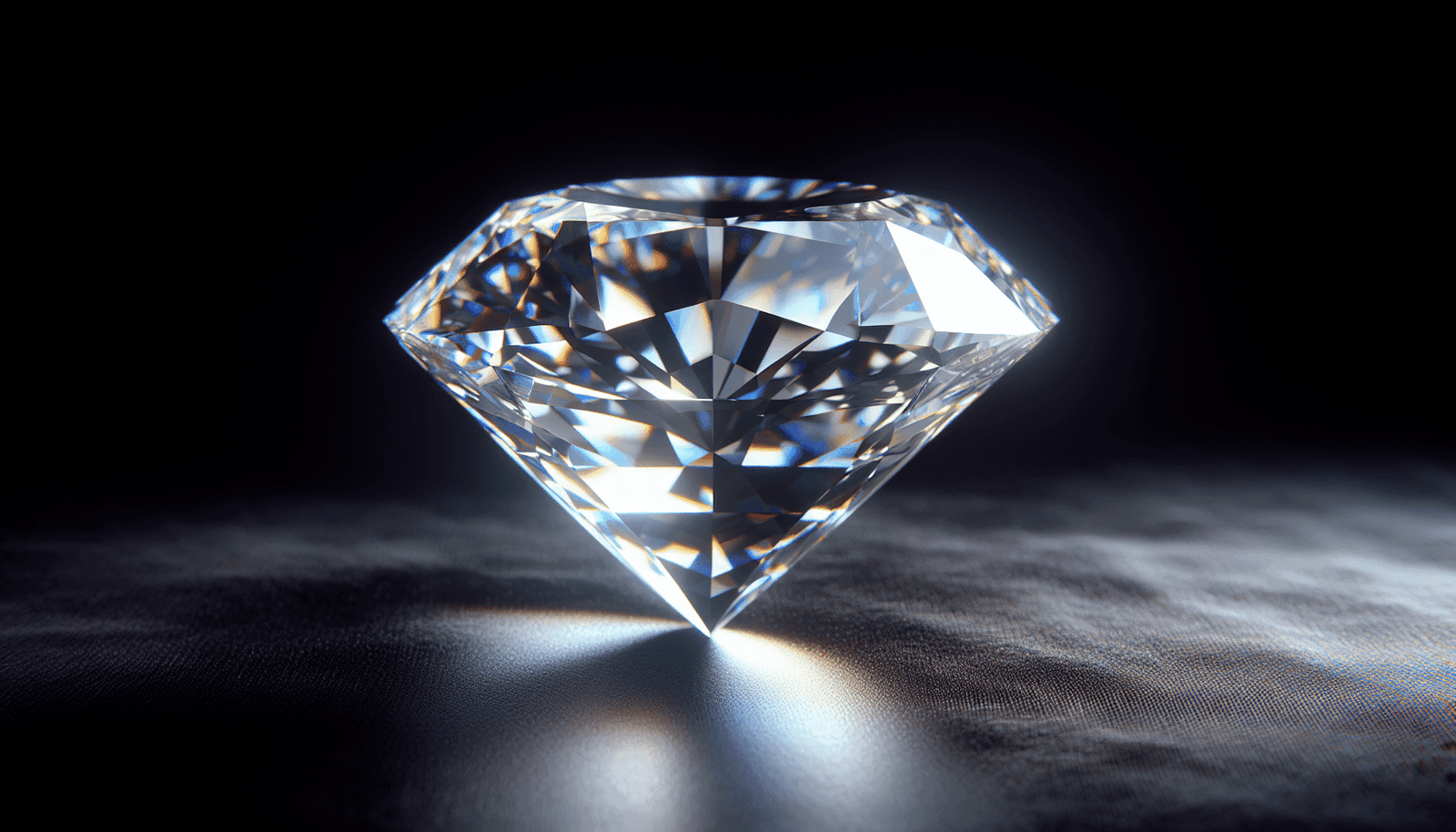Have you ever wondered what material diamond is made from? That sparkling gemstone on your finger or in your earrings, the one that glitters and catches everyone’s eye, has a fascinating origin and composition. You might be curious about what exactly makes up this coveted piece of jewelry.

Basics of Diamond Composition
First off, let’s get down to the nuts and bolts of what a diamond actually is. Essentially, a diamond is just carbon. Yes, the same element that makes up the graphite in your pencil is also responsible for creating these dazzling gems. The difference lies in the arrangement of the carbon atoms.
Carbon Structure
In graphite, carbon atoms are arranged in layers that can easily slide over one another. This leads to its soft, flaky texture. However, in diamond, each carbon atom forms four strong covalent bonds with other carbon atoms in a three-dimensional lattice. This crystalline structure makes diamonds incredibly hard and gives them their unique properties.
Here’s a simple table to highlight the differences in carbon structures:
| Property | Graphite | Diamond |
|---|---|---|
| Atomic Bonding | Weak Van der Waals bonds between layers | Strong covalent bonds in a 3D lattice |
| Hardness | Soft | Extremely hard |
| Transparency | Opaque | Transparent |
Formation of Diamonds
You might be wondering, how do these carbon atoms transform into diamonds? It’s not magic, but rather, extreme conditions deep within the Earth that enable this transformation.
Geological Conditions
Diamonds are formed at depths of 140 to 190 kilometers below the Earth’s surface, where temperatures range from 900°C to 1,300°C and pressures are between 45 to 60 kilobars. These extreme conditions force carbon atoms into the diamond structure. Over millions to billions of years, these carbon atoms crystallize to form diamonds.
Kimberlite Pipes
Once formed, diamonds are brought closer to the Earth’s surface through volcanic eruptions in structures known as kimberlite pipes. These pipes act as natural express elevators, transporting diamonds from the Earth’s mantle to its crust.

Industrial vs. Natural Diamonds
Now that we know diamonds are essentially carbon, you might ask: “Can we create diamonds artificially?” The answer is a resounding yes.
Natural Diamonds
Natural diamonds are formed over millions of years under the Earth’s surface, as we’ve discussed. They are then mined, cut, and polished to create the dazzling gemstones we all know and love.
Synthetic Diamonds
Synthetic diamonds, also known as lab-grown or man-made diamonds, are created using high-pressure high-temperature (HPHT) or chemical vapor deposition (CVD) processes.
HPHT Process
In the HPHT process, a small diamond seed is placed in carbon and exposed to high temperatures and pressures similar to those found deep within the Earth. Over several weeks, carbon atoms crystallize around the seed to form a diamond.
CVD Process
In the CVD method, a diamond seed is placed in a chamber filled with carbon-rich gases. When the gases are heated, carbon atoms are deposited onto the seed, forming a diamond layer by layer.
Here’s a table summarizing the differences:
| Type of Diamond | Formation Process | Time to Form |
|---|---|---|
| Natural | Deep Earth under high pressure and temperature | Millions to billions of years |
| Synthetic (HPHT) | High pressure and high temperature in lab | Weeks |
| Synthetic (CVD) | Chemical vapor deposition | Weeks |
Properties of Diamonds
Diamonds aren’t just beautiful; they’re also incredibly functional, owing to their unique properties.
Hardness
Diamonds are known as the hardest naturally occurring material on the Mohs scale of mineral hardness, rating a perfect 10. This makes them invaluable in industrial applications such as cutting, grinding, and drilling.
Thermal Conductivity
Interestingly, diamonds also excel in thermal conductivity. They can rapidly dissipate heat, making them useful in high-performance electronics and heat sinks.
Optical Properties
The ability of diamonds to refract light is what makes them sparkle. Their high refractive index and dispersion cause white light to be split into multiple colors, creating a dazzling display often referred to as “fire.”

Examining Diamond Quality
If you’ve ever shopped for a diamond, you might have heard of the 4 Cs: Cut, Clarity, Color, and Carat. These factors determine the quality and price of a diamond.
Cut
The cut of a diamond refers to how well it has been shaped and faceted. A well-cut diamond reflects light beautifully, enhancing its sparkle. Cuts vary from round to princess and everything in between.
Clarity
Clarity measures the presence of internal or external flaws, known as inclusions and blemishes, respectively. The fewer the flaws, the higher the clarity and the more valuable the diamond.
Color
While diamonds come in a range of colors, the most valuable are colorless. This is graded on a scale from D (colorless) to Z (light yellow or brown).
Carat
Carat is the measurement of a diamond’s weight. Larger diamonds are generally rarer and more expensive, but the overall quality is influenced by how well the other three Cs are represented.
Here’s a summary of the 4 Cs:
| 4 Cs | Description | Impact on Value |
|---|---|---|
| Cut | Quality of diamond shape and facet | Higher quality cut equals more sparkle |
| Clarity | Presence of inclusions and blemishes | Fewer flaws mean higher value |
| Color | Colorlessness of the diamond | Colorless diamonds are more valuable |
| Carat | Weight of the diamond | Heavier diamonds are rarer and more expensive |
Unique Types of Diamonds
You might think all diamonds are the same, but there are some unique variations worth noting.
Colored Diamonds
Colored diamonds, such as blue, pink, or green, are exceedingly rare and highly prized. These colors result from impurities or structural anomalies within the diamond. For instance, blue diamonds contain boron, while yellow diamonds have nitrogen.
Diamond Simulants
Diamond simulants are materials that mimic the appearance of diamonds but do not possess the same physical properties. Common examples include cubic zirconia and moissanite. While much cheaper, they lack the resilience and durability of a true diamond.
Environmental and Ethical Considerations
While diamonds are undoubtedly beautiful, the process of obtaining them can be fraught with problems.
Environmental Impact
Mining natural diamonds can have significant environmental repercussions, including habitat destruction and soil erosion. Moreover, the energy-intensive processes used to extract and transport diamonds contribute to greenhouse gas emissions.
Ethical Concerns
The term “blood diamonds” or “conflict diamonds” refers to diamonds mined in war zones and sold to finance armed conflict. This dark side of the diamond trade has led to the establishment of the Kimberley Process Certification Scheme (KPCS), a protocol aimed at preventing the trade in illegally mined diamonds.
Lab-Made Diamonds
An ethical and sustainable alternative is the purchase of lab-grown diamonds. These diamonds offer the same physical properties as natural diamonds but without the associated environmental and ethical concerns.
Care and Maintenance of Diamonds
You might have spent significant money on a diamond, so it’s essential to know how to care for it properly to ensure it retains its brilliance.
Cleaning
Regular cleaning is vital. Use a mild detergent and a soft-bristle brush. Soak your diamond in a solution of water and mild dish soap, then gently brush it clean to remove any dirt or oils that may have accumulated.
Storage
Store your diamonds individually in soft cloth pouches or a lined jewelry box to prevent them from scratching other pieces of jewelry. Diamonds are incredibly hard and can scratch other, less durable gemstones.
Professional Maintenance
Consider periodic professional cleaning and inspection. Jewelers can identify and fix potential issues like loose settings, ensuring your diamond remains secure and stunning.
Conclusion
So, what material is a diamond made from? At its essence, a diamond is simply carbon, arranged in a unique structure that gives it remarkable properties. From forming deep within the Earth’s mantle to sparkling in a beautifully crafted piece of jewelry, diamonds are a captivating part of nature and human ingenuity. Whether natural or synthetic, diamonds will continue to mesmerize and hold a special place in our hearts and history.



